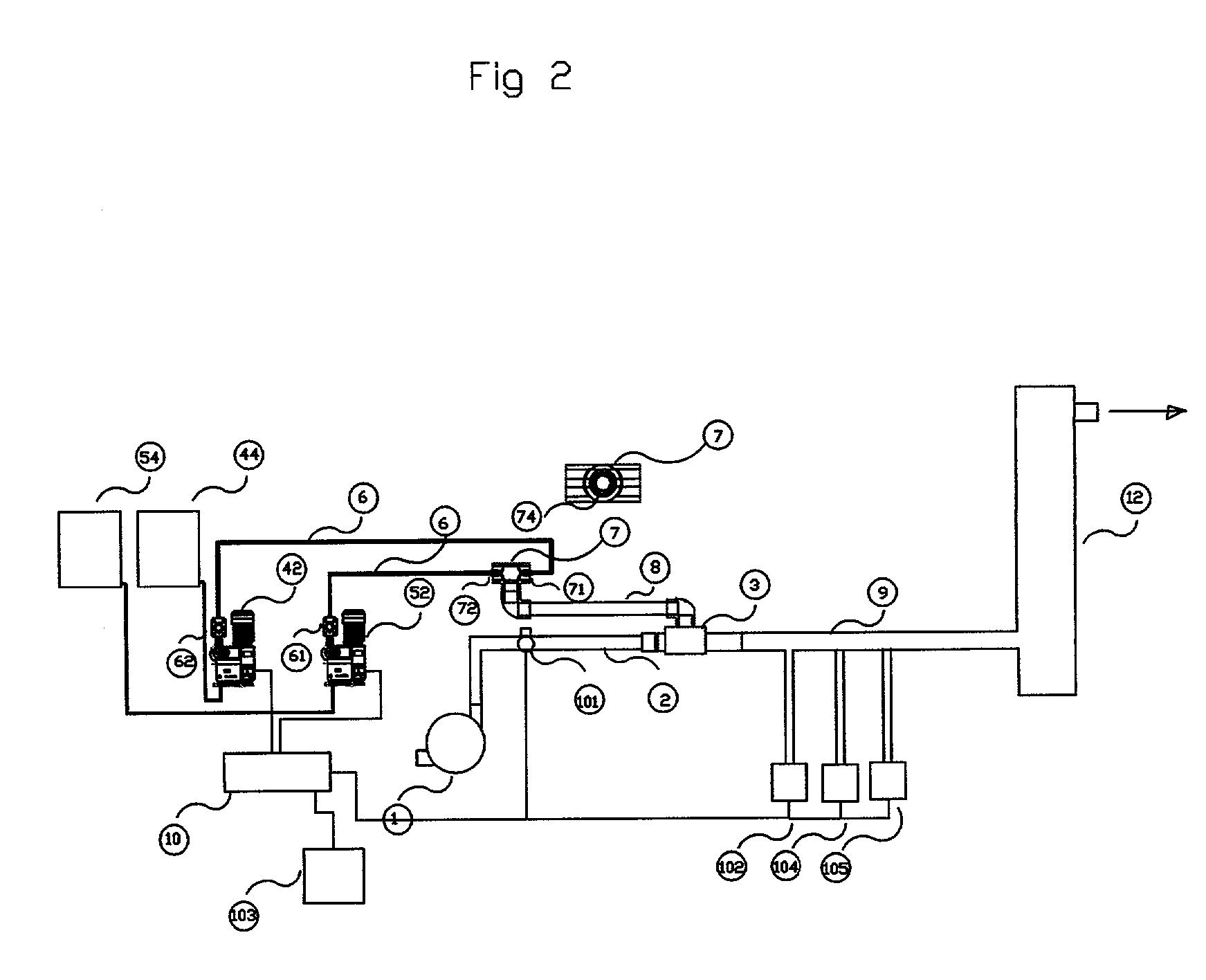Process and apparatus for the generation of chlorine dioxide using a replenished foam system
- Summary
- Abstract
- Description
- Claims
- Application Information
AI Technical Summary
Benefits of technology
Problems solved by technology
Method used
Image
Examples
example 2
[0041] A process was performed according to the invention by continuously feeding a spherical reactor having an internal diameter of approximately one inch with 37 ml / min of an aqueous solution comprised of 34-wt. % sodium chloride, 0.6-wt. % sodium chloride, 11.3-wt. % hydrogen peroxide and 17 ml / min. of 93-wt % sulfuric acid. The reactor was operated at a pressure of 500 mm Hg and an external surface temperature of 135 degrees Fahrenheit. The resulting chlorine dioxide solution contained 310-PPM ClO.sub.2 and demonstrated a chlorate conversion efficiency of 100%. The acid feed per kilogram of ClO2 produced was 2.54 kilograms.
example 3
[0042] A process was performed according to the invention by continuously feeding a spherical reactor having an internal diameter of approximately one inch with 31 ml / min of an aqueous solution comprised of 34-wt. % sodium chloride, 0.6-wt. % sodium chloride, 11.3-wt. % hydrogen peroxide and 17 ml / min. of 93-wt % sulfuric acid. The reactor was operated at a pressure of 500 mm Hg and an external surface temperature of 135 degrees Fahrenheit. The resulting chlorine dioxide solution contained 264-PPM ClO.sub.2 and demonstrated a chlorate conversion efficiency of 100%. The acid feed per kilogram of ClO.sub.2 produced was 2.98 kilograms.
PUM
 Login to View More
Login to View More Abstract
Description
Claims
Application Information
 Login to View More
Login to View More - R&D
- Intellectual Property
- Life Sciences
- Materials
- Tech Scout
- Unparalleled Data Quality
- Higher Quality Content
- 60% Fewer Hallucinations
Browse by: Latest US Patents, China's latest patents, Technical Efficacy Thesaurus, Application Domain, Technology Topic, Popular Technical Reports.
© 2025 PatSnap. All rights reserved.Legal|Privacy policy|Modern Slavery Act Transparency Statement|Sitemap|About US| Contact US: help@patsnap.com


